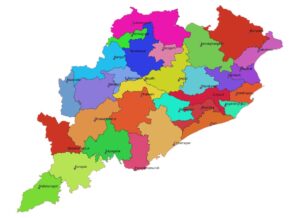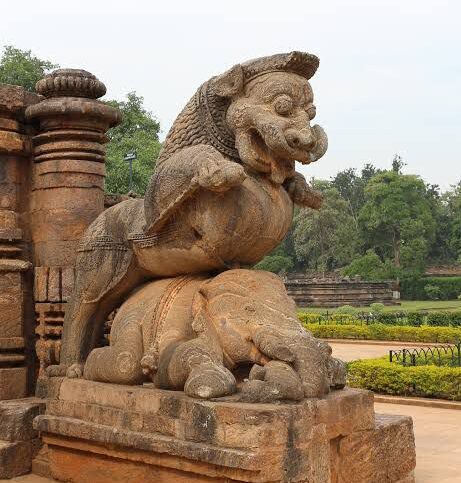How Many Districts are There in Odisha?
Odisha, a state located on the eastern coast of India, is divided into 30 districts. Each district in Odisha is unique in terms of its culture, geography, and history. These districts are further categorized into various administrative zones for effective governance and development.
The state’s districts are home to a diverse range of landscapes, including lush forests, hill ranges, pristine beaches, and bustling urban areas. From the coastal districts like Puri and Ganjam to the tribal regions of Kalahandi and Koraput, Odisha’s districts offer a mix of traditional heritage and modern growth.
The district system in Odisha plays a vital role in the state’s administration, ensuring that local governance is efficiently carried out, and development is distributed across all regions. Whether it’s the historical district of Khurda, the industrial hub of Angul, or the religiously significant Puri, each district contributes to the rich tapestry of Odisha’s identity.
A Brief Overview of All the Districts in Odisha
Odisha, a state of rich cultural heritage, is divided into 30 districts, each offering a unique blend of history, natural beauty, and local traditions. Here’s a quick glimpse of all the districts of Odisha:

- Angul: Known for its industrial importance, Angul is rich in coal and power plants. The district also features scenic landscapes like the Satkosia Gorge and is home to many tribal communities.
- Balangir: This district, located in western Odisha, is famous for its agriculture, particularly rice production. It also celebrates the renowned “Dhanu Yatra,” the world’s largest open-air theater festival.
- Balasore: Situated near the Bay of Bengal, Balasore is known for its historical importance and its contribution to India’s missile testing programs. It also has beautiful beaches and a thriving fishing industry.
- Bargarh: Known for its agricultural economy, Bargarh is famous for rice cultivation and the traditional “Dhanu Yatra” festival. It also has a significant historical and cultural background.
- Bhadrak: This coastal district is home to beautiful beaches and temples. Its agrarian economy thrives on the production of rice, and it is known for its vibrant community life.
- Boudh: Famous for its natural beauty, Boudh is a tribal area with picturesque landscapes and ancient temples. The district is rich in forests and water resources, including the Mahanadi River.
- Cuttack: Known as the “Silver City” due to its renowned silver filigree work, Cuttack is the judicial capital of Odisha. It also boasts historical landmarks and vibrant cultural festivals, such as Durga Puja.
- Deogarh: A lesser known but scenic district, Deogarh is known for its lush forests and tribal communities. The region is also famous for its local handloom weaving.
- Dhenkanal: A district with rich historical significance, Dhenkanal is home to the famous Kapilash Temple and offers breathtaking views of forests, hills, and waterfalls.
- Gajapati: A peaceful district, Gajapati is blessed with a combination of hills, forests, and tribal traditions. It is also home to the famous Potangi village and the Buddhist site at Ratnagiri.
- Ganjam: A coastal district, Ganjam is famous for its beautiful beaches and cultural significance. It is also known for the historical town of Berhampur and silk weaving industries.
- Jagatsinghpur: This district is primarily agricultural, producing rice, sugarcane, and coconuts. It also hosts many religious festivals and is known for the temple town of Kujanga.
- Jajpur: A district with a rich cultural and historical legacy, Jajpur is known for its temples like the Viraja Temple and its importance in the Kalinga War history.
- Jharsuguda: Known for its mineral resources and power plants, Jharsuguda also has beautiful waterfalls like Budhatal and Kanjipani, offering both industrial growth and scenic attractions.
- Kalahandi: Historically a part of the Kalahandi princely state, this district is known for its tribal culture and the beautiful hills and forests. It also hosts the famed Pattachitra art.
- Kandhamal: Kandhamal is famous for its organic turmeric, rich forests, and tribal communities. It is known for its festivals, local cuisine, and the picturesque landscapes of the region.
- Kendrapara: Located near the Bay of Bengal, Kendrapara is famous for the Bhitarkanika National Park, known for its mangroves and the conservation of Olive Ridley Sea turtles.
- Keonjhar: Rich in minerals and forests, Keonjhar is an industrial hub. The district is home to waterfalls like Sanaghagra and lush landscapes, making it a popular spot for nature lovers.
- Khurda: Bhubaneswar, the capital of Odisha, is located in Khurda. The district is known for its historical temples, like the Lingaraj Temple, and the Khandagiri and Udayagiri Caves.
- Koraput: This district is blessed with lush hills, waterfalls, and diverse tribal culture. It is also home to the famous tribal fair in Koraput and the rich flora and fauna of the region.
- Malkangiri: A tribal-dominated district, Malkangiri is known for its scenic forests and the Balimela Reservoir. It is a region rich in biodiversity and untouched natural beauty.
- Mayurbhanj: Famous for the Simlipal National Park, Mayurbhanj is a haven for wildlife enthusiasts. The district also celebrates the famous Mayurbhanj Chhau dance and is known for its forests and tribal culture.
- Nabarangpur: Known for its tribal culture, Nabarangpur offers scenic beauty with terraced fields and dense forests. It also produces a variety of spices and has rich agricultural land.
- Nayagarh: Known for its temples, wildlife sanctuaries, and picturesque landscapes, Nayagarh is also famous for its cultural traditions and agricultural produce, particularly rice and pulses.
- Nuapada: A district with dense forests and natural beauty, Nuapada is home to the Debrigarh Wildlife Sanctuary and is famous for its tribal communities and unique wildlife.
- Puri: A religious hub, Puri is renowned for the Jagannath Temple and its world-famous Rath Yatra. The district is also known for its pristine beaches, temples, and vibrant cultural life.
- Rayagada: Known for its tribal population and rich flora and fauna, Rayagada is also famous for its waterfalls like Guchhapani Falls and scenic landscapes. It is an important mineral-producing area.
- Sambalpur: Famous for the Hirakud Dam, one of the largest earthen dams in the world, Sambalpur is also known for its rich cultural heritage, including Sambalpuri dance and the famous Sambalpuri sarees.
- Sonepur: A small district, Sonepur is known for its temples and agricultural activities. It is also famous for the Chariot Festival and wildlife sanctuaries, offering a blend of cultural and natural beauty.
- Sundargarh: Known for its mineral resources, especially iron ore, Sundargarh is an industrial hub. It is also home to beautiful waterfalls like Khandadhar and is surrounded by dense forests.
Each district in Odisha has something unique to offer, from rich cultural festivals to breathtaking landscapes and diverse wildlife. Together, these districts form a beautiful mosaic that contributes to Odisha’s charm and identity.
—


